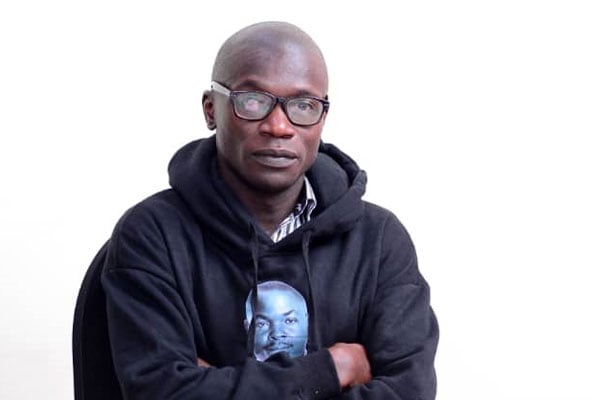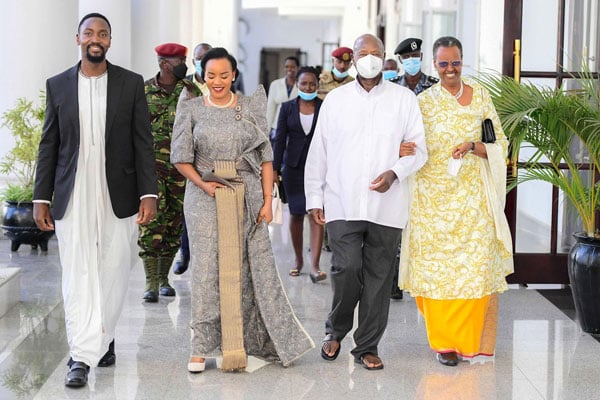Prime
When one’s property is not their property

The issue of how spouses should share joint property after divorce has come up in several cases before the High Court and the Court of Appeal. PHOTO/ COURTESY
What you need to know:
- The Court of Appeal, in a landmark decision on Monday, ruled that it’s no longer an automatic half share of matrimonial property for a divorcing couple.
When Joseph Waigo Ambayo and Jackline Aserua’s marriage ended in divorce in 2012, Justice Catherine Bamugemereire, who was at the High Court’s Family Division at the time, ordered that the pair share its matrimonial property equally.
Mr Ambayo and Ms Aserua, who had first cohabited for 16 years before they solemnised their marriage in 2005 at Our Lady of Africa Church, Mbuya, Kampala, were jostling over their matrimonial house.
Although the house was in Mr Ambayo’s name, Justice Bamugemereire—who is now a Supreme Court judge—ruled that it belonged to the couple jointly in equal shares.
Mr Ambayo appealed the decision, saying his former wife had only a 20 percent stake in the house. And, having gone through the arithmetic of how the couple pooled money to buy the land before building the house, the Court of Appeal agreed with Mr Ambayo that Ms Aserua deserved 20 percent and not 50 percent as Justice Bamugemereire had ruled.
“I would allow grounds 2, 3 and 5 of the appeal with the consequences that the order of the trial judge awarding the respondent 50 percent share in the suit property would be set aside,” Justice Muzamiru Mutangula Kibeedi wrote in the lead judgement assented to by justices Elizabeth Musoke and Christopher Gashirabake, adding, “After re-evaluating the evidence before the trial court and trying my best to weigh the peculiar circumstances of this case, while not losing sight of the principles which I have discussed in detail herein above, I would declare that the respondent (wife) is entitled to 20 percent share in the suit property.”
Rwabinumi landmark case
The judgment comes nine years after the Supreme Court’s landmark judgment on how a divorced couple shares property in the famous Julius Rwabinumi Vs Hope Bahimbisomwe case. Just like Mr Ambayo and Ms Aserua, Mr Rwabinumi and Ms Bahimbisomwe cohabited for several years before exchanging their marriage vows at Our Lady of Africa, Mbuya, Kampala in 2003.
The couple developed serious misunderstandings in 2004, forcing Mr Rwabinumi to chase Ms Bahimbisomwe and their infant son out of their residence in Kisaasi Village, Kampala.
Citing Mr Rwabinumi’s cruelty and adultery, which had led to her marriage irretrievably breaking down, Ms Bahimbisomwe was granted divorce by High Court Justice Remmy Kasule. Justice Kasule—who has since retired having been elevated to the Court of Appeal—used the law on ownership of property of married spouses to rule that the parties’ matrimonial home belonged to Mr Rwabinumi.
Since the house was built before the parties got married, Ms Bahimbisomwe was deemed to have been entitled to only the cost of the improvements she made to the house.
Mr Rwabinumi, however, took issue with Justice Kasule’s orders regarding the distribution of a piece of land he had in Kasangati township.
In a finding that was upheld by the Court of Appeal, Justice Kasule ordered that both parties share the land equally. Mr Rwabinumi didn’t agree, arguing that Ms Bahimbisomwe had only contributed Shs7.5m towards the total purchase price of Shs20m.
On this basis, Mr Rwabinumi averred that the Court of Appeal failed to properly evaluate this evidence and to find—according to the respective parties’ contribution ratio—that Ms Bahimbisomwe’s share of the Kasangati land was only one-third and not one-half, as the trial judge had found.
Ms Bahimbisomwe’s lawyers, on their part, supported the Court of Appeal judgment, insisting that the decision of the justices of the Court of Appeal on the distribution of property was based on, among others, the principle of proprietary estoppel and the community property system, which are both applicable in Uganda as a common law jurisdiction.
As far as the Kasaganti land was concerned, Mr Rwabunumi admitted that he received Shs1m from Ms Bahimbisomwe. He consequently sought to minimise her cash contribution by calling it a loan advanced to him.
“It is worth noting that by the time the petition was heard in the High Court, which was over one year later, the appellant had not paid back ‘the loan’ he admitted receiving from the respondent. It is, therefore, not surprising that the learned trial judge and the Court of Appeal believed the respondent’s evidence and not that given by the appellant on this issue,” Justice Esther Kisaakye, who wrote the Supreme Court’s lead judgment, said.
Interpretation
Justice Kisaakye said the issue of how a court should determine a contributing spouse’s share in joint property has come up in several cases before the High Court and the Court of Appeal, referencing the Kagga Vs Kagga case, High Court Divorce Cause No.11 of 2005 in which Justice Eldad Mwangusya observed thus: “Our courts have established a principle which recognises each spouse’s contribution to acquisition of property, and this contribution may be direct, where the contribution is monetary, or indirect where a spouse offers domestic services.”
Justice Mwangusya proceeded to note: “When distributing the property of a divorced couple, it is immaterial that one of the spouses was not as financially endowed as the other as this case clearly showed that while the first respondent was the financial muscle behind all the wealth they acquired, the contribution of the petitioner is no less important than that made by the respondent.”
Justice Kisaakye also cited the Sempiga Vs Sempiga Musajjawaza divorce case where the court awarded the wife, among others, a 50 percent share in a farm spanning 154 acres. These decisions, the judge reasoned, were clearly consistent with English cases such as Chapman Vs Chapman, 1969, where the wife was held to have acquired an equal share in the property, although she had not made an equal cash contribution to the acquisition of the property in question.
“The court found and held that the husband and wife had put all their financial resources into the pool to purchase their house without reserving any special interests,” Justice Kisaakye observed.
Furthermore, Justice Kisaakye cited the case of Muthembwa Vs Muthembwa in which the Court of Appeal of Kenya also rejected a similar argument by the appellant (husband) contesting an order awarding the wife a 50 percent share in the matrimonial home and all other properties and businesses. Kenya’s Court of Appeal, Justice Kisaakye said, held that whether the wife had contributed to the acquisition of the suit properties was a question of fact.
“It is also worth noting that the contributing spouse’s share is not restricted to a maximum of 50 percent share either in the matrimonial home or in other jointly held property,” Justice Kisaakye said, adding that in some other cases, the court awarded a higher percentage share either in the matrimonial home or in some other properties.
Justice Kisaakye cited a 1998 divorce case popularly known as Mayambala Vs Mayambala in which she ruled that the wife’s interest in the matrimonial home was established at a 70 percent share. Turning to Rwabinumi’s case, the judge found no merit in his contention challenging the half share given to the wife in the Kasangati land.
Non-monetary contribution
The Rwabinumi case was but one strand of a typical divorce case. Another strand involves assessing or giving a monetary value to the non-monetary contribution made by the wife towards the matrimony property. In the Rwabinumi case, Justice Kisaakye noted that the other pertinent question that arises is what amounts to contribution to earn a spouse a share in the property.
She said in the Kagga case, court pointed out that the contribution may be direct and monetary or indirect and non-monetary. She added that in the case of Muwanga Vs Kintu, High Court Divorce Appeal No. 135 of 1997, Justice Solomy Balungi Bossa adopted a wider view of non-monetary indirect contributions by following the approach of the Court of Appeal of Kenya in Kivuitu Vs Kivuitu.
In the aforesaid case, Justice Kisaakye said the Kenya court found that the wife indirectly contributed towards payments for household expenses, preparation of food, purchase of children’s clothing, organising children for school and generally enhanced the welfare of the family. Taken together, this amounted to a substantial indirect contribution to the family income and assets, which entitled her to an equal share in the couple’s joint property.
Non-monetary contributions, Justice Kisaakye opined, enable “the other spouse to either acquire or develop the property in question.”
The Court of Appeal, however, took a rather curious take in the Ambayo Vs Aserua case this week. Justice Kibeedi said the trial record indicated that Mr Ambayo started living with Ms Aserua when he was 24 years and she 19. Justice Kibeedi further noted that Mr Ambayo educated Mr Aserua from primary level, where she had previously stopped. Under his care, she attained several certificates and driving skills.
“However, it’s not shown anywhere in the judgment of the trial court considering these uncontested facts when evaluating the respondent’s final stake in the matrimonial property,” Justice Kibeedi said, adding, “Whereas it is common in marriages for spouses to render ‘unpaid care and domestic work’, it is also not uncommon for the spouse, who has been the beneficiary or recipient of the ‘unpaid care and domestic work’ to reciprocate or otherwise reward the other in monetary and, or non-monetary terms as they go along their marriage journey.”
The “opportunity cost of the education venture” upon which Justice Kibeedi based to quash a 50-50 split of matrimonial property is not a one-size-fits-all. Experts say rulings on such subject matters will—as this week’s events showed—be on a case-by-case basis.





